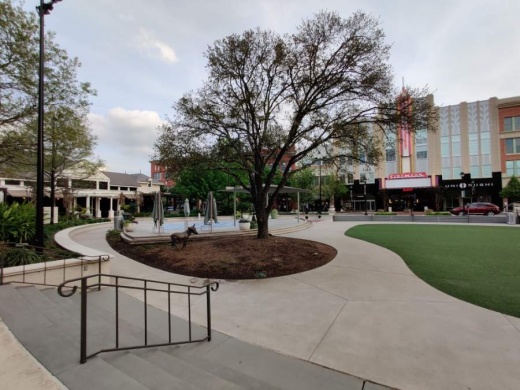Data collected by entities such as Google, Ceubiq and SafeGraph demonstrates the rapid drop in Americans' and Texans' daily travel and regular activities over the past several weeks following the World Health Organization's March 11 declaration of a coronavirus pandemic.
SafeGraph, a geospacial data analysis company, used anonymous data from millions of cell phones to develop a "Shelter in Place Index" based on devices' travel patterns. The index measures the daily change in the "away-from-home" activity—regardless of distance traveled—of 45 million devices, according to SafeGraph.
The company's measurements have demonstrated similar sheltering patterns at the local, state and national levels since mid-March. SafeGraph indices for the U.S., Texas and both Harris and Montgomery counties followed a similar rapid upward trend through March 25 before they each leveled off and began decreasing in April.
Since March 17, SafeGraph tracked Montgomery County at a higher index than the national or statewide average and at a similar level to neighboring Harris County. Both counties have ranked in SafeGraph's highest 20 daily index scores statewide since March, with Montgomery County's index of 19.96 on April 18—the most recent date with available data—placing as the 13th highest in Texas. Collin County had the highest index statewide as of April 18 at 28.62, while Falls County ranked lowest with an index score of 4.64.
Of all states, Texas currently ranks 20th with an index of 18.28 as of April 18; New Jersey's index of 31.03 is currently the highest, while Arkansas is the lowest with an index score of 10.13.
Since SafeGraph tracked Montgomery County's highest index of 23.07 on April 8, the county's score has trended lower each day in line with state and national scores over the same time.
SafeGraph's interactive Shelter In Place Index dashboard may be viewed here. Cuebiq, a New York-based information technology company, said it has used information collected from 15 million mobile devices to develop a similar location-based analysis of Americans' shelter-in-place patterns. Cuebiq's data tracks the percentage of residents who stayed home—measured as 330 feet from a user's residence—and those who traveled various distances away from home each day.
According to Cuebiq's analysis, Montgomery County residents began staying at home at a higher rate following the March 11 pandemic declaration by the WHO. Between 14% and 16% of Montgomery County residents stayed at home during the week prior, while 18% to 20% stayed home during the week of March 9. The following week saw a higher increase, with 27% to 43% of Montgomery County residents remaining at home through the week of March 16.
Weekend at-home figures traditionally tracked higher than weekdays, a trend that continued following the pandemic declaration. Between 21% and 34% of Montgomery County residents stayed home over the weekends before and after the pandemic was declared, while weekend at-home rates since March 21 have fallen between 41% and 56%, according to Cuebiq.
Weekday and weekend travel between 1 and 10 miles from home has remained relatively steady since early March, while longer trips from home have decreased. Almost half of Montgomery County residents traveled farther than 10 miles from home March 6, while weekday rates after March 16 have all fallen below 33%.
Cuebiq's interactive shelter-in-place analysis may be viewed here. Google, which aggregated anonymous data to track the mobility habits of cell phone users sharing their location histories, measured similar declines in all Texas and Montgomery County residents' travel away from home for specific purposes since the start of 2020.
Compared with daily mobility baselines calculated between Jan. 3 and Feb. 6, Texans' travel for several top activities away from home decreased from mid-March through April 11. Travel for retail and recreation dropped 45%, visits to groceries stores and pharmacies dropped 14%, and visits to parks dropped 54%. Visits to transit stations dropped 49%, and travel to workplaces dropped 38%, while mobility trends for places of residence increased 16% in that time.
Montgomery and Harris counties' reported mobility changes were similar to statewide figures, although fewer residents in Montgomery County reduced their grocery and park visits than those in Harris County or Texas overall. Retail and recreation trips in Montgomery County dropped 44% compared to the previous baseline, grocery and pharmacy trips decreased by 7%, and park visits decreased by one-third. Travel to transit stations and workplaces decreased by 41% and 38% respectively, while residential mobility trends showed a 15% increase. Google's reports for Texas and its counties may be viewed here.





